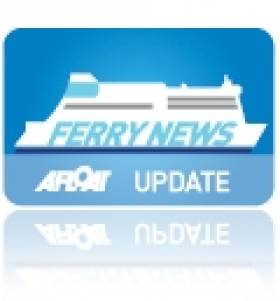Displaying items by tag: Irish Sea ferry sector
Seatruck Welcomes Heysham Link-Road to ‘Motorway’
#FreightFerry– Irish Sea freight-ferry operator Seatruck Ferries has welcomed the UK government's granting of the Heysham link-road to the M6 motorway, writes Jehan Ashmore.
The new road will improve both the local transport infrastructure and access to the Lancashire port, reduce congestion and cut transport costs.
Work is expected to commence this July and will near completion in late 2015.
Seatruck has been working with other local interests to push for a direct link road to junction 34 of the M6. This will enable easier port traffic access to the motorway network without having to transit through Lancaster.
The origins of Seatruck began in 1996 with the introduction of un-accompanied freight trailer service between Warrenpoint -Heysham, and to specifically meet transportation needs of the haulage industry.
Since then the company has progressed considerably with more routes: Dublin-Liverpool and Dublin-Heysham and a fleet of freight roll-on roll-off ferries.
As previously reported throughout last year on Afloat.ie, Seatruck received a quartet of custom built 'Heysham-Max' new build tonnage delivered from a Germany shipyard.
The final 18,000 tonnes 'P' class newbuild Seatruck Precision entered service last July on the Dublin-Liverpool route.
The company operate more than 50 weekly departures transiting the short-sea network of routes between Ireland and the UK.
Serving this network are freight-ferries with a capacity ranging from 65-150 unaccompanied trailer units.
Some of the 12 strong fleet, are currently deployed on the charter market to other users in the Irish Sea and operating in waters beyond this market sector.





























































